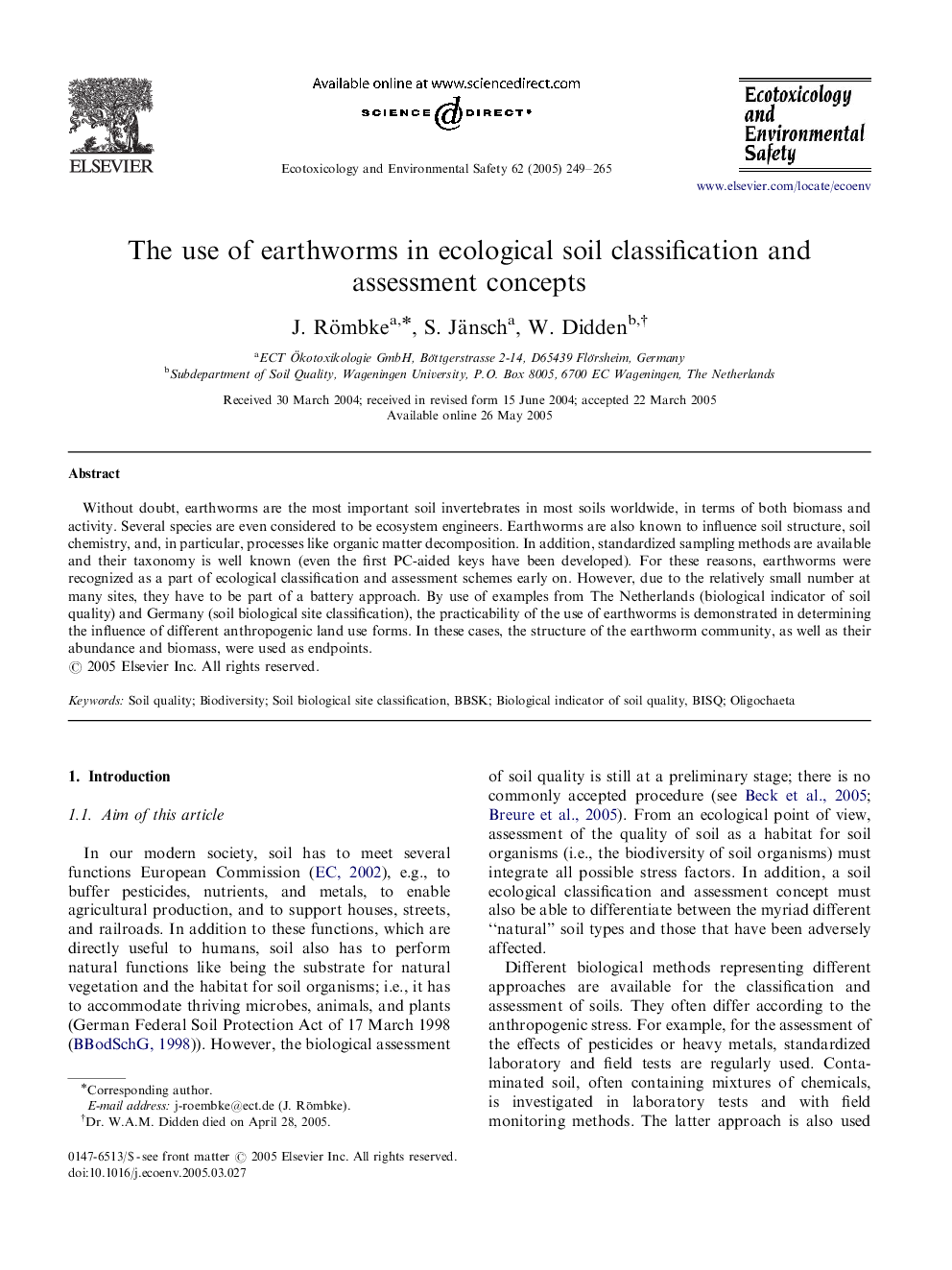| Article ID | Journal | Published Year | Pages | File Type |
|---|---|---|---|---|
| 9454725 | Ecotoxicology and Environmental Safety | 2005 | 17 Pages |
Abstract
Without doubt, earthworms are the most important soil invertebrates in most soils worldwide, in terms of both biomass and activity. Several species are even considered to be ecosystem engineers. Earthworms are also known to influence soil structure, soil chemistry, and, in particular, processes like organic matter decomposition. In addition, standardized sampling methods are available and their taxonomy is well known (even the first PC-aided keys have been developed). For these reasons, earthworms were recognized as a part of ecological classification and assessment schemes early on. However, due to the relatively small number at many sites, they have to be part of a battery approach. By use of examples from The Netherlands (biological indicator of soil quality) and Germany (soil biological site classification), the practicability of the use of earthworms is demonstrated in determining the influence of different anthropogenic land use forms. In these cases, the structure of the earthworm community, as well as their abundance and biomass, were used as endpoints.
Keywords
Related Topics
Life Sciences
Environmental Science
Environmental Chemistry
Authors
J. Römbke, S. Jänsch, W. Didden,
